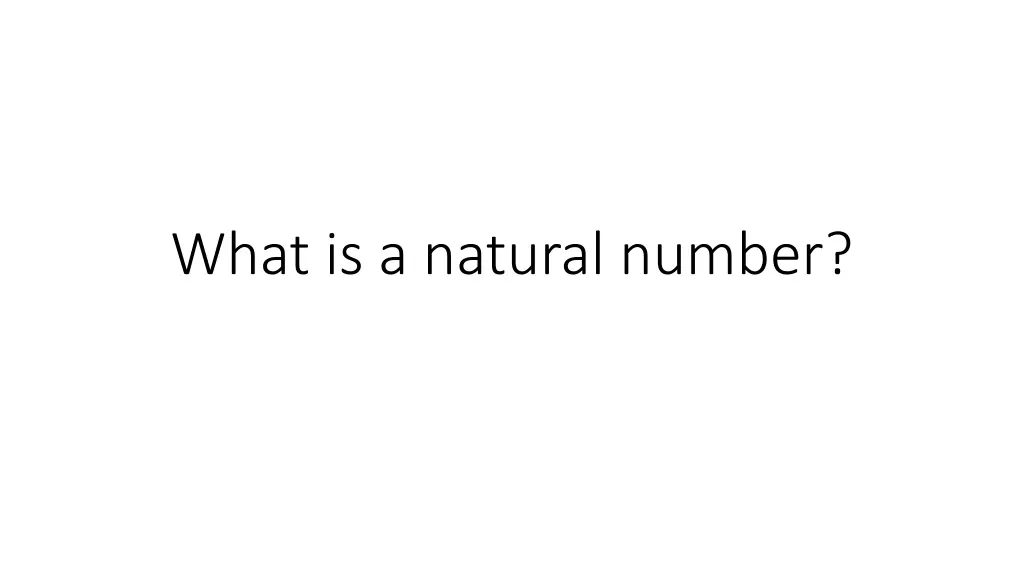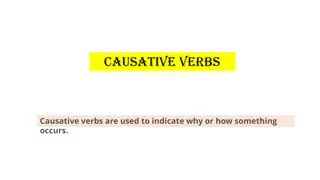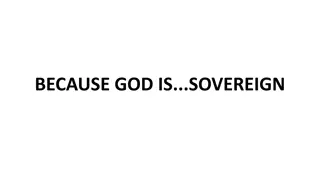
Understanding Natural Numbers and Set Theory
Explore the concept of natural numbers, sets, subsets, ordered pairs, and cardinality through a detailed discussion. Understand the properties of sets, including subsets and equality, as well as cardinality and its relation to ordered pairs. Discover how these concepts form the foundation of mathematical understanding.
Download Presentation

Please find below an Image/Link to download the presentation.
The content on the website is provided AS IS for your information and personal use only. It may not be sold, licensed, or shared on other websites without obtaining consent from the author. If you encounter any issues during the download, it is possible that the publisher has removed the file from their server.
You are allowed to download the files provided on this website for personal or commercial use, subject to the condition that they are used lawfully. All files are the property of their respective owners.
The content on the website is provided AS IS for your information and personal use only. It may not be sold, licensed, or shared on other websites without obtaining consent from the author.
E N D
Presentation Transcript
Consider Sets A Set can have elements We denote an element, e, in a Set, s, by e S But what can be in a set?? So far we have only suggested that we can have sets and elements of sets Do we have any sets? Define the empty set, {} or to be the set with no elements: = a set S such that for any x, not x S. (We also write x S.) So we have one set,
More sets Since we have something, the empty set, we can define the new set that has the empty set as an element: { {} } = S such that {} S Here we use the notation for defining a set by listing all its elements: S = { a, b, c } means a S, b S, c S and nothing else S.
Subsets B is a subset of A denoted by B A if for every y B also y A. Note: {} is a subset of every set, since there is no element in {} to check. For any S, S S : a set is always a subset of itself. So any set, S, has at least {} and S as subsets. Two sets S and T are equal, S = T, if S T and T S. This means they have exactly the same elements.
A sequence of sets { } { , { } } { , { }, { , { }} } { , { }, { , { }}}, { , { }, { , { }}} } ... Sk= {Sj| j < k} S0 S1 = {S0} S2 = {S0, S1} S3 = {S0, S1, S2} S4 = {S0, S1, S2, S3}
Ordered pairs Let a and b be two objects that is sets, since we have no other objects. Define the set Sab= {a, {a, b}}. We call this the ordered pair <a,b> and a is the first element of the pair and b is the second element. (Note: <a,a> = {a, {a}})
Cardinality Two sets S and T have the same cardinality if there is a set M of ordered pairs, such that: every x S, there is a y T, such that <x,y> M and every z T, there is a w S, such that <w,z> M and if <x,y> M and <x,z> M, then y = z and if <x,y> M and <w,y> M, then x = w. (In effect, M defines a 1-1 and onto function)
Integers We name the cardinalities of the sets in our sequence as follows Cardinality( ) is 0 Cardinality({ }) is 1 Cardinality({ , { } }) is 2 Cardinality({ , { }, { , { }} }) is 3 Cardinality({ , { }, { , { }}}, { , { }, { , { }}} }) is 4 Etc.
Cardinality examples Denote the cardinality of a set S by |S| | | = 0 |{ }| = 1 |{{ }}| = 1 |{ { , { }} }| = 1 definition definition M = { < , { }> } M = { < , { , { }}> }
Cardinality examples |{ , { }}| = 2 |{{ }, { , { }}}| = 2 |{ { , { }}, {{ , { }, { , { }}} }| = 2. M = { < , { , { }}>, < { }, {{ , { }, { , { }}} > } def M = { < , { }>, < { }, { , { }}> } |{ { }, {{ }}, { , { }} }| = 3 M = { < , { }>, <{ }, {{ }}>, <{ , { }}, { , { }}> }
Power Set Definition: The set of all subsets of a set A, denoted P(A), is called the power set of A. What is P({})? {} is the only subset of {}, so P({}) = { {} }, or { } the set containing {} as an element: {} { {} } Note: { {} } not equal to {}
Another sequence of sets {} or P( ) = { } P( { } ) = { , { } } P( { , { } } )= { , { }, {{ }}, { , { } } } P( { , { }, {{ }}, { , { } } } )= { , { }, {{ }}, {{{ }}},{{ , { }}}, { , { }}, { ,{ { }}} , { ,{ , { }}, {{ }, {{ }}}, {{ }, { ,{ }}}, {{{ }}, { ,{ }}}, { , { }, {{ }}},{ , { }, { , { }}}, { , {{ }}, { , { }}} , {{ }, {{ }}, { , { }}}, { , { }, {{ }}, { , { }}} }






















